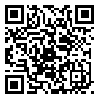Volume 33, Issue 3 (Journal of Advanced Materials- winter 2015)
2015, 33(3): 61-78 |
Back to browse issues page
Download citation:
BibTeX | RIS | EndNote | Medlars | ProCite | Reference Manager | RefWorks
Send citation to:



BibTeX | RIS | EndNote | Medlars | ProCite | Reference Manager | RefWorks
Send citation to:
Fatemeh Mohtaram, Vahid Mottaghitalab, Gholamreza Baghersalimi, Akbar Khodaparast Haghi. The Development of Textile Based Microstrip Antenna Using Inkjet Printing. Journal of Advanced Materials in Engineering (Esteghlal) 2015; 33 (3) :61-78
URL: http://jame.iut.ac.ir/article-1-598-en.html
URL: http://jame.iut.ac.ir/article-1-598-en.html
, motaghitalab@guilan.ac.ir
Abstract: (7793 Views)
Today, along with the advances in circuit printing technology it has become possible to fabricate band lines integrated with circuit elements. The band lines are known as microstrip lines and the whole packages are called microstrip antennas. The microstrip antennas have three layers, including conductive patch layer, dielectric sub layer, and ground conductive layer. One of the most important problems of prevalent antennas is their inflexibility, which was addressed in the current paper using textile based structure with proper flexibility and flexural stiffness. This was done using ink jet printing techniques followed by electrolytic plating to provide diverse antenna patterns based on nickel particles. The coated surface was characterized by scanning electron microscope, elemental analysis and optical microscope. Moreover, the washing fastness and the other physical and mechanical specifications were measured using standard techniques. The elemental analysis of metal-coated fabric clearly indicated a high level of nickel. Furthermore, the morphological investigation proved the formation of homogenous nickel nanoparticle in a diameter range of 100-500 nm with an evident boundary and semi-spherical shape. In addition, the cumulative presence of particles in a sequence followed a cabbage-like structure originating from metallic crystals. The washing fastness tests revealed a high stability in electrical resistance after several washing steps. In the meantime, the antenna gain and the corresponding bandwidth were measured using spectrum analyzer. The results indicated a 1 kHz increase in bandwidth and 11 dB decrease in antenna gain for a large size compared to a small one. Meanwhile, the bandwidth of rectangular pattern showed a 0.2 kHz increase and 2.5 kHz decrease compared to spiral pattern. Finally, the four-probe electrical conductivity test demonstrated a high level of conductivity around 2632 S/cm.
Keywords: Electrolytic plating, Inkjet printing, Microstrip antenna, Polyester fabric, Nickel nanoparticle.
Type of Study: Research |
Subject:
General
Received: 2015/03/15 | Accepted: 2015/03/15 | Published: 2015/03/15
Received: 2015/03/15 | Accepted: 2015/03/15 | Published: 2015/03/15
Send email to the article author






